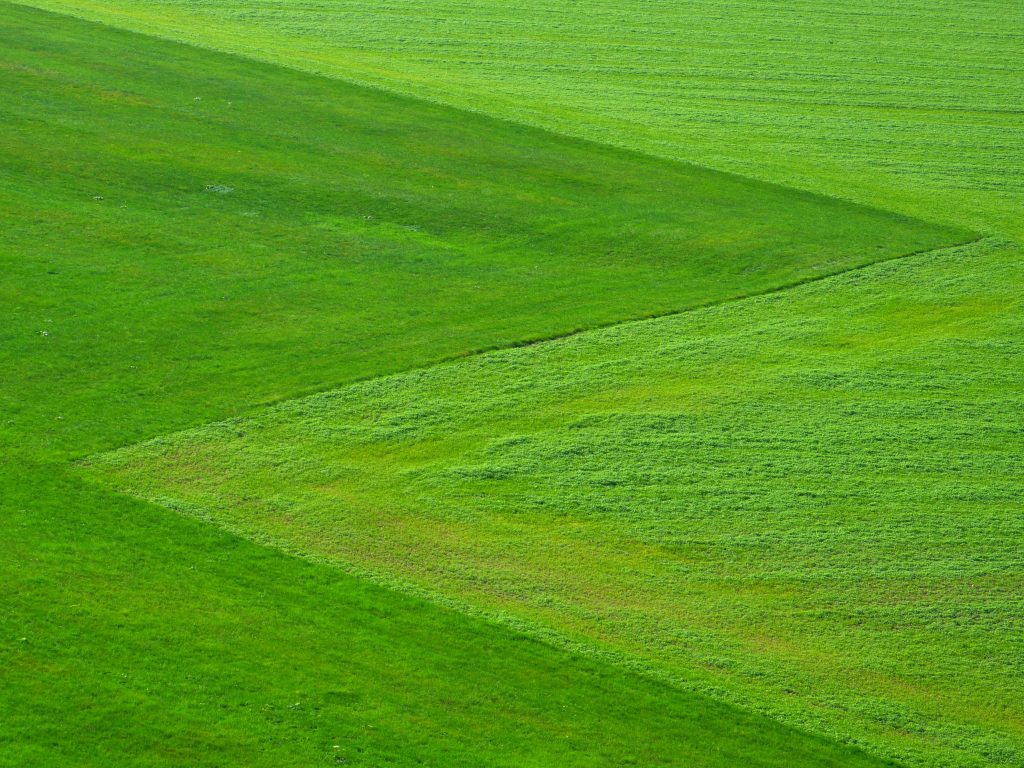
There are many types of turfgrass, but not all of them are created equal. Some types are better for certain applications than others. Are you sure you’ve been using the best turfgrass for your property?
In this blog post, we will discuss the different types of turfgrass, how they’re rated and used, and how to choose the right one for your needs. Read on!
What is Turfgrass?
Turfgrass is a type of grass that is grown in lawns, parks, and other areas where a strong, durable grass is needed. Turfgrass is different from other types of grasses because it has been bred to withstand heavy traffic and harsh conditions.
So when you think of a playing field, like a gorgeous golf course, or thick baseball field, or just a lush backyard lawn – that’s turfgrass! A lot of science, research, and testing goes into the development of different types of turfgrass to create the best options for a variety of climates and situations.
How Many Types of Turfgrass Are There?
There are many types of turfgrass, but the most common types are Kentucky bluegrass, tall fescue, and perennial ryegrass.
In the U.S., there are more than 100 types of turfgrass. These refer to the different types of grasses that have been developed for different purposes. For example, some turfgrasses are better for home lawns while others are better suited for commercial applications.
Turfgrass cultivars are developed to have certain traits that make them better for their intended use. For example, some types of turfgrass are bred to be more resistant to disease while others are bred to tolerate drought conditions better.
Warm Season versus Cool Season Turfgrasses
Turfgrasses are classified according to their growth habits: warm-season grasses and cool-season grasses. Warm-season grasses are active during the warmer months of the year and go dormant during the cooler months. Cool-season grasses are active during the cooler months of the year and go dormant during the warmer months.
How Are Turfgrasses Rated?
The National Turfgrass Evaluation Program (NTEP) is a world-class leader in the evaluation of turfgrass species. The turfgrass industry in the U.S. and many other parts of the world use NTEP data.
Turfgrasses are rated based on their ability to withstand wear and tear, their resistance to disease, and their ability to tolerate drought conditions. The ratings range from one to nine, with nine being the most durable.
The types of turfgrass that are typically used in home lawns have a rating of six or less. The types of turfgrass that are used on golf courses and other high-traffic areas have a rating of seven or higher. However, that’s not to say that you can’t elect to install a higher-rated turfgrass in your yard!
Which Are the Right Types of Turfgrass for Me?
The right types of turfgrass for you will depend on your climate, the amount of sun and shade in your yard, and the amount of traffic your lawn gets.
In the Southeast, Bermuda grass is a popular choice for home lawns because it is tolerant of heat and drought. In the Northeast, Kentucky bluegrass is a popular choice because it tolerates cold winters and shady conditions.
TIFTUF Bermuda and TifGrande Bermuda are two high-quality types of turfgrass specially designed to be drought and wear-resistant.
Should I use One Turfgrass or a Mixture?
Most lawns are a mixture of two or more types of turfgrass. This is because no one turfgrass species is ideal for all conditions. By mixing different types of turfgrass, you can create a lawn that is more resistant to disease and can better withstand wear and tear.
This is most commonly done when you have a professional landscaper install your lawn by growing it from seeds that they have mixed. However, many people opt to install a hybrid or specially designed turfgrass sod to ensure the highest quality of lawn.
The Benefits of Installing High-Quality Sod
If you are looking for a high-quality, low-maintenance lawn, installing sod is the way to go. Sod is a type of turfgrass that has been grown on a farm and then harvested in rolls. It can be installed quickly and easily, and it requires very little upkeep.
Sod is an excellent choice for busy families or anyone who wants a beautiful lawn without all the work. If you are thinking about installing sod in your yard, contact a local sod farm to learn more about the types of turfgrass available in your area.
How to Find a Local Turfgrass Grower
If you are interested in installing a new lawn or looking for a turfgrass grower in your area, visit the Turfgrass Group, Inc. website. TTG works with turfgrass growers across the Southern U.S. to connect them with property owners looking for great sod.
No matter what type of turfgrass you choose, we can help you find a local grower who can provide you with the perfect grass for your lawn.
Takeaways on Types of Turgrasses and How to Choose The Right One
When you’re trying to sort through all the types of turfgrass out there to decipher what’s best, here are some key takeaways:
– Turfgrass is a type of grass that is used to create lawns.
– There are many different types of turfgrass, and they are all bred for different purposes.
– The right types of turfgrass for you will depend on your climate, the amount of sun and shade in your yard, and the amount of traffic your lawn gets.
– If you are looking for a high-quality, low-maintenance lawn, installing sod is the way to go.
Whatever your needs are, there is a turfgrass that’s right for you.
